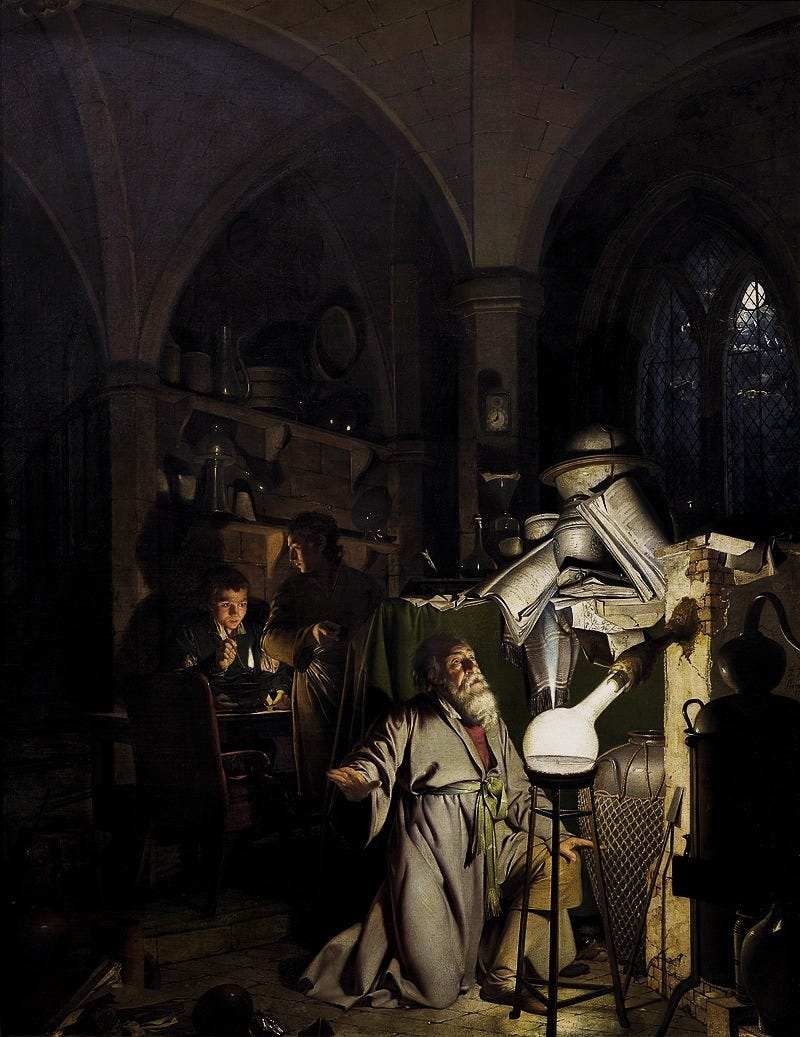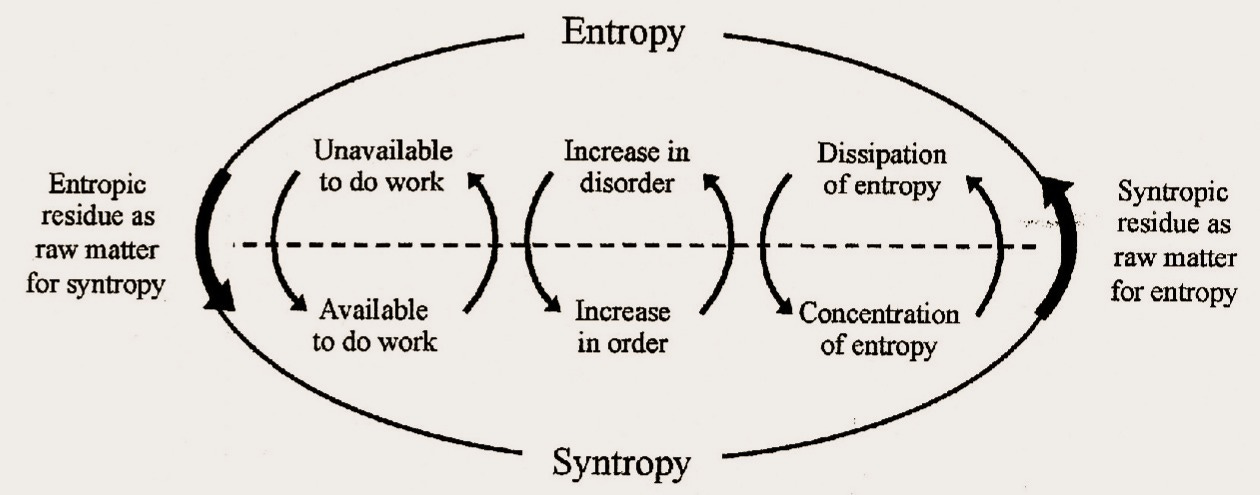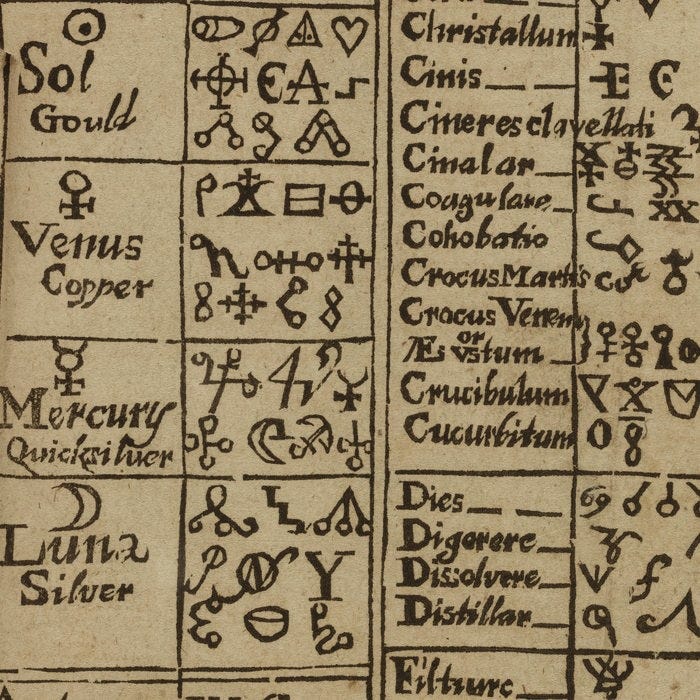Metaphysical Reflections on the Unattainable Ideal
On the Philosopher's Stone: Requested by @johnscot
The Philosopher's Stone, wrapped in secret, attracts the imagination of anyone inclined to wander the labyrinth of metaphysics, philosophy, and science. It would be unfair to suggest that it is simply an alchemical fancy—some nonfunctioning notion of medieval mystics—but rather a symbol of the human condition, a cipher for our endless desire to exceed the ordinary and achieve the sublime. Indeed, to study the Stone is to study ourselves, our aspirations, our limitations, and, ultimately, our deepest fears about existence and knowledge. What is it about this symbol that endures across centuries, cultures, and disciplines, whispering to us as we study into the abyss of the unknown? Perhaps it is because, in its shadow, we glimpse something more profound: a reflection of our own endless striving toward something beyond our comprehension. It holds, at once, the promise of transcendence and the tragic credit that such transcendence may forever elude us.
Metaphysically, the Philosopher's Stone conveys unity: the conjunction of opposites, the reconciliation of spirit and matter, of chaos and order. Its promise is both simple and deep: the transformation of the base into the perfect, the finite into the infinite. But this promise is not exclusive to the mystic; it whispers to the philosopher, the scientist, the artist, and, of course, the dreamer. These voices, though different, echo the same eternal question: can the imperfect world be made perfect? Can the broken be made whole? And if such a shift is possible, is it the world that changes—or we, ourselves, who must be transfigured?
Let us begin where all intellectual attempts must: with epistemology, the foundation of philosophy itself.
To consider the Philosopher's Stone is to consider the nature of knowledge and truth, to wrestle with the inquiries:
What can we know? How do we know it?
In a sense, every philosophical inquiry, from Plato's ideal forms to the postmodern breakdown of meaning, is a quest for the Stone. For what is the Stone but the ultimate answer, the singular solution to all questions of being and knowing? For centuries, philosophers have struggled to understand what forms truth, with many, perhaps like Descartes, hoping that in a moment of intellectual clarity—through the act of reason itself—they could touch the Stone, or something like it, and in so doing spike through the veil of illusion that separates us from the real. And yet, the Stone remains always a promise, never quite fulfilled. It is an irresistible vision, always just out of reach, never fully realized. The truth, it seems, is always untouchable, yet it is also always the object of our highest aspirations.
The Stone as a Metaphysical Symbol
In the mystical traditions of Hermeticism and alchemy, the Philosopher's Stone is a paradoxical object. It is at once an essence and a concept, perhaps tangible and intangible. Alchemists spoke of it as the lapis philosophorum, a substance capable of transmuting principal into gold and gifting eternal life through the Elixir of Life. Yet, as every serious scholar of alchemy knows, these descriptions are allegorical. The gold was not mere gold, and the immortality was not mere longevity. These are not to be understood as physical truths but spiritual symbols, hints at a greater truth just beyond the grasp of the senses.
The Stone is, above all, a representation of the perfected self. It symbolizes a state of unity, where the physical and spiritual realms are no longer at odds but are harmonized into a single, eternal truth. To hold the Stone is to seek this harmony, to ascend from the fragmented, dualistic view of the world into an all-encompassing insight. This notion of harmony, so central to the alchemical tradition, hints at a deeper longing: the desire for totality, for completeness, for a resolution of the tension between body and soul, between the finite and the infinite. It is a paradox: we are whole in our brokenness, and yet, to truly understand the Stone, we must acknowledge our fragmented state.
But here is the genius of the metaphor: the Stone does not exist in the world; it exists in the seeker. Its power is not in its ability to transmute elements but in its ability to transform the alchemist—to awaken in them the realization that the universe's deepest truths are reflections of their inner reality. In this way, the Stone is not merely an object or a pursuit, but a mirror. It reveals not what we are but what we might become—a higher version of ourselves, one that transcends the limitations of time, space, and matter. To pursue the Stone is to engage in a metaphysical alchemy, the shift of the self through the act of seeking.
The Stone and Philosophy: Grasping for Truth
Philosophy, properly understood, begins with a sense of wonder but quickly transitions to epistemological rigor. To ask what the Stone represents is to ask what truth itself means. Is truth something external, waiting to be revealed? Or is it, just like the Stone, a construct, something we create through the act of seeking it?
Plato might argue that the Stone is akin to his ideal forms: eternal, unchangeable truths that exist beyond the physical realm. For Aristotle, it could be the actualization of potentiality, the fulfillment of purpose born in all things. Later thinkers, from Descartes to Kant, might see the Stone as a metaphor for the limits of reason and the need for a synthesis between empirical observation and metaphysical speculation. Yet in every case, the Stone remains untouchable. Its appeal lies not in its triumph but in its pursuit. To grasp for the Stone is to engage in the highest form of intellectual and spiritual activity: the search for meaning in a world that often seems empty of it.
What makes the search for the Stone so charming, so irresistible, is that it forces us to confront the very nature of human aspiration. It beckons us toward a final answer, a final resolution, while simultaneously revealing that such a solution is, by its very nature, unreachable. The more we approach, the more it recedes. It is a symbol not of victory, but of the eternal quest. In this respect, the Philosopher's Stone becomes a perfect metaphor for human existence itself—a journey that never arrives at its destination but, paradoxically, is all the more valuable for that. The journey is the point, and in this way, the Philosopher's Stone teaches us not the art of transmutation, but the art of patience, of unrelenting quest. To seek the Stone is to find meaning in the act of seeking, even as we acknowledge that the Stone may forever remain just beyond our comprehension.
Why the Stone Matters
So why, in a world of quantum computers, does the Stone still matter? Because it reminds us that science and philosophy, for all their differences, are ultimately human endeavors. They are born of the same motivation: the desire to understand, to create order out of chaos, to find the eternal in the ephemeral.
The Stone, then, is not an antique but a timeless symbol. It speaks to the deepest parts of us, to our longing for excellence, for harmony, for the impossible made real. It challenges us to think, to question, to imagine—and in so doing, it makes us more than we are. It is a reminder that there is something greater than the totality of our parts, something that lies beyond the material world, beyond our reasoned conclusions and carefully constructed models of the universe. It is the tale of something surpassing.
In the end, it is not an entity or a pursuit. It is a process, a journey, an eternal striving. It is, perhaps, the best of what it means to be human. And that, I think, is its greatest secret of all. The Philosopher's Stone, in all its dichotomies, teaches us that the search is the answer. That, perhaps, is the greatest wisdom of all: not to seek to possess, but to seek to understand the very nature of the seeking itself. In this, the Stone offers us not transformation, but illumination—the acknowledgment that the pursuit of truth, in its endless, irresistible pursuit, is the very essence of our humanity.
If you enjoyed this post and wish to show gratitude, you can do so by making a donation starting at just $5 via the link below. Your kindness helps me continue my studies and pursue my profession—thank you.







Good read. I have a different take on the philosphers stone. It seems to me the stone is metaphor for the heart. Fixating blindly, pursuing knowledge turns the heart to stone. The purpose of life is not to know but experience and enjoy. But then again my brains a little warped. LoL.
Intriguing. Have you read The Great Carbuncle by Hawthorne? It explores just this.